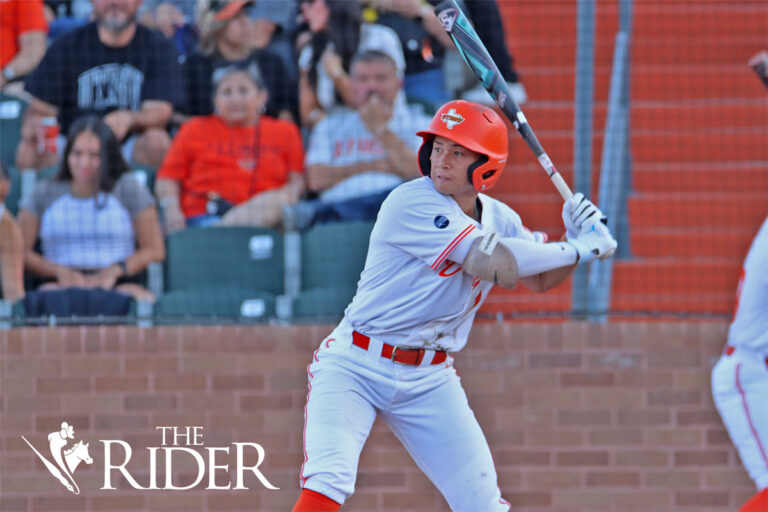
A sign tells the university community to avoid pouring substances down a storm drain outside Troxel Hall on the Edinburg campus. UTRGV has developed a Stormwater Management Program (SWMP) designed to eliminate the release of contaminants to the storm sewer. For more information, visit its website. Fatima Gamez Lopez/The Rider Photos
Environmental Health, Safety and Risk Management at UTRGV has implemented measures to limit the amount of contaminated water that runs through storm sewers and improve overall water quality by following six minimum control measures.
The six control measures are public education and participation, public involvement, enforcement of illicit discharge detection and elimination, construction oversight, post construction oversight, good housekeeping and pollution prevention.
According to UTRGV’s Guide to a Clean Stormwater System, stormwater is rain that runs on nonabsorbent surfaces which then picks up pollutants and are deposited “into ditches and canals which lead to Laguna Madre. The storm drain system receives no treatment.”
This process is known as Municipal Separate Storm Sewer System (MS4).
Richard Costello, safety director of Environmental Health, Safety & Risk Management, said one thing students and the general public can do to maintain the system is pick up after pets.
“One of the things that we want to reduce when we go into the storm sewer is what we call organic growth,” Costello said. “So, when you take things like leaves, for example, when you take things like pet debris and you put it into the storm sewer, ultimately, the key thing to remember is that everything that leaves the university goes into … Colorado and then, eventually, makes its way down to the Gulf of Mexico via the Laguna Madre.”
For this reason, he asks students to keep in mind where the water goes before they decide to litter.
“If they’re thinking about it, maybe they’ll say, ‘you know what, I don’t want anybody to be downstream of us to be affected by what I’m basically doing.’ And I think more than anything, awareness is a big part of this.”
Asked if the new underground system construction in Edinburg was of any relation to the MS4 plan, Costello replied, “Basically, it’s twofold. So, what that does is it basically addresses [post-construction stormwater management in new development and redevelopment] because when we add up all the water that we’ve displaced on our campus … we’ve built a lot of buildings, but we have not basically addressed the amount of water that we’ve displaced.
“So, what we’ve done is, instead of taking that water and putting it into the neighboring subdivision, we now put it into the storm drain. And that’s very proactive on the part of the university for doing that. And then, obviously, No. 2, if you can allow for easy conveyance of the water during the course of a rainfall, you don’t get back up and you don’t get the inclusion of all the contaminants that are basically into the storm drain that are the result of backup.”
In conjunction with the Texas Commission on Environmental Quality, UTRGV accepts household hazardous wastes, such as insecticides, pesticides, paint, solvents, used motor oil, and other auto fluids, to dispose of properly.
These fluids “can poison aquatic life. Land animals and people can become sick from eating diseased fish and shellfish or ingesting polluted water,” according to the UTRGV website.Students can submit a hazardous waste pickup request at waste@utrgv.edu.

Fatima Gamez Lopez/The Rider Photos





